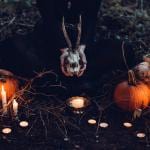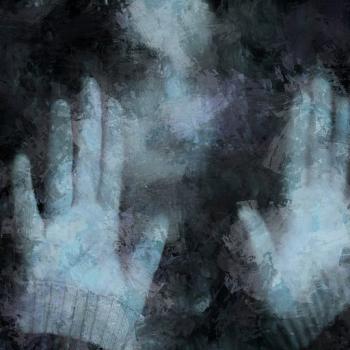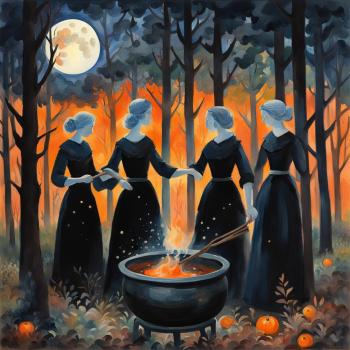With Samhain approaching in just a couple of weeks (wow, already?), many pagans and witches are already well into their preparations for the celebration. I often find that I am scrambling rather last-minute to get my preparations in order, as I get wrapped up in so many other things going on in the fall season and my own personal life. The next few months of the year seem to be the busiest for some, and I am not any different. But with a couple of weeks left, it’s not too late to prepare our celebrations and magickal workings.
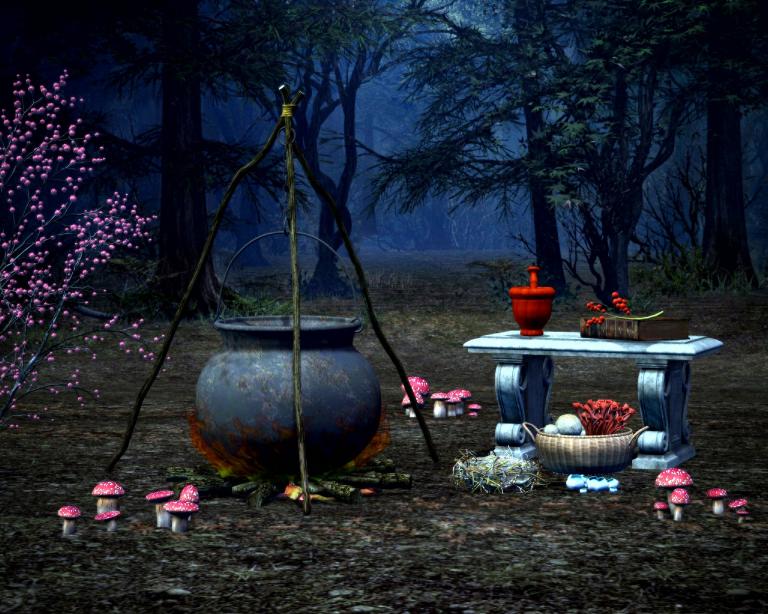
Before I jump into the content of what the name of this article suggests, I’ll back up a minute. Samhain is not an Egyptian-originated holiday. The name ‘Samhain’ is of Celtic origin, it originates with the Old Irish word meaning “summer’s end” and was celebrated throughout all of the Celtic isles and northwestern Europe. There are other celebrations around the world at this time of the year with similar themes of spirit and ancestral reverence, such as Día de los Muertos in central America and All Saints Day in Christianity.
There really isn’t an equivalent holiday in Egypt celebrated around the same time of year; there is, however, written record that suggests Osiris’ resurrection (with the help of Isis, Anubis, Nephthys, and others) happened around this time of the year, but that’s a story for another day.
But if you take a look – and believe me, you don’t have to look far – at the religion of the ancient world of Egypt, it’s rife with themes of death, the dead, the afterlife, spirits of the dead, ancestral reverence, etc. It was a central piece of their everyday life. They built giant pyramids and elaborate tombs just to ensure that the dead had the best experience they could in the afterlife. You can literally Google “Egypt” and get immediate proof.
There’s no need to try to rationalize connections for someone like me, who is an eclectic witch and pagan. It’s not as much the origin of the celebration as the celebration itself. Regardless of the name you give it – I choose to use the name Samhain, mind you, but you can choose the name you prefer – it’s still a time of the year to honor and celebrate the spirits of the dead and the growing darkness of the year. Magickally speaking, it’s a time to do spells associated with transformation and the shadow self.

Anubis is Khenty-Amentiu, Lord of the Dead. His worship as prominent god of death predates that of Osiris and many other deities in Egypt. He was so widely important in Egypt that there were many necropoli and catacombs dedicated to him. At a place in modern Egypt called Saqqara, just south of the capital of Cairo, 8 million mummified animals, mostly dogs, were found placed at the catacombs there. Egyptologists and professors believe that, rather than being sacrificed as it might be presumed, people would make a pilgrimage to the catacombs at Saqqara to have the mummified remains of their beloved dogs placed there as a gift to Anubis.
Guardian
Anubis is Tepy-Dju-ef, Guardian and Protector. Many, if not most, people in ancient Egypt would pray to Anubis throughout their lifetime for protection and that they may be guided to the afterlife upon death. Anubis’ image and name were painted and etched in tombs and upon sarcophagi and coffins for protection and guidance, and statues were placed within the tombs themselves.
He is the Obsidian Lord that watches quietly in the dark, offering a strong, solid presence. Carry a stone such as obsidian or black tourmaline. In times where you feel that you need protection, you can call to Anubis and ask for his protection:
Dua Anpu!
Walk with me.
Guard me on my path.
Shroud me in your dark cloak of protection.
Quick relevant lesson – Anubis is the name given to him by the Greeks and the most frequently used name. Anpu is the closest estimate of how his name would be transliterated into modern language. I honestly use the two interchangeably, depending on where my intuition takes me.
The In-Between Spaces
As Liminal Lord, Anubis rests in the spaces between the Earth, the Underworld, and the Stars. The Earth and the Underworld are his realms as he walks with the spirits of the living and the dead and guides them towards the afterlife. He is the shadow that exists between the physical and the light. Black and Gold are his colors, and he rests in and between both. There are also loose associations between Anubis and the Sirius star, connecting him to the astral realm and to the mysteries and secrets hidden there. As Samhain is (roughly) the halfway point between the Autumn Equinox and the Winter Solstice, it’s a liminal time in itself.
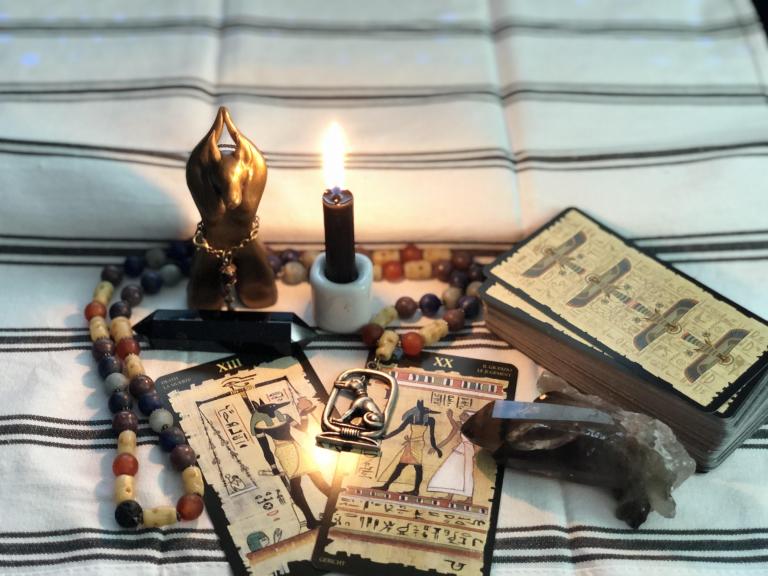
Connecting with Anubis on Samhain
Samhain is a night of liminality, of mystery and of secrets. Connect with Anubis as Hery-Sesheta, Master of Secrets. He holds the keys to the secrets and mysteries of the universe. For me, I find that I can connect with him using a symbol of some sort. Personally, the key is often symbolically represented in the Ankh, the Utchat, the infinity loop, scales, or a key – it depends on what intuitively calls to me.
Here’s an example of something I’ve done to connect with him on Samhain in past years. I love to go on a nice stroll in the chill night air. Doesn’t have to be anywhere in particular, but perhaps somewhere quieter where you can really connect with his spirit. This is my time to mentally commune with Anubis – my walking meditation where I simply let my mind explore the deeper mysteries. I may be speaking directly to him, sometimes, too.
When I return home, I will usually do some sort of ritual bath. Afterwards, I will sit down in front of a black candle (or sometimes black and gold to represent he who is between worlds), often anointed with sandalwood or frankincense with images of one of the symbolic keys drawn or etched on it. There is always incense on hand to be lit as both an offering and a means of getting into the right headspace to connect with Anubis.
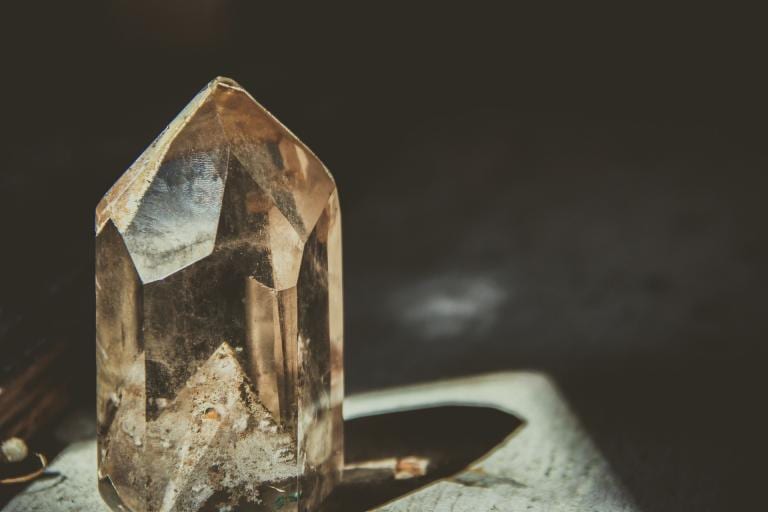
I like to have smoky quartz and mugwort on hand, as these help me to connect with him as Liminal Lord and Hery-Sesheta. A nice, steady rhythmic drum beat, or something that will get me into the rhythm and magick, helps, too. If the mood strikes, I will say or chant Dua Anpu, or perhaps simply mentally repeat his name or one of his epithets.
Divination is a good way to connect with Hery-Sesheta and ask for messages and guidance. In tarot, He often appears to me as the Death card, Judgement, King of Swords, or sometimes something else entirely. It varies depending on the message he has for me. A simple question of ‘what message do you have for me, Anubis?’ will do.
Magickally speaking, shadow workings or any kind of shamanic journeying are good to do with Anubis and on Samhain, too. I’ve used him as a guide to connect with parts of me that need healing. I’d recommend taking time to read my article Transformation & Anubis for starters, and then continuing with Beginning Emotional Healing with Anubis.
As you step out into the dark, chill, starlit Samhain night air, call to Anpu. He is Khenty-Amentiu, the Lord of the Dead. He is Tepy-Dju-ef, Guardian and Protector. He is Hery-Sesheta, Master of Secrets. Seek Him. Walk with Him.
(Note: descriptions of epithets used here are not literal translations, but translations of meaning/intention as I’ve interpreted them in my own practice).




